Garden Court Apartments (Hollywood)
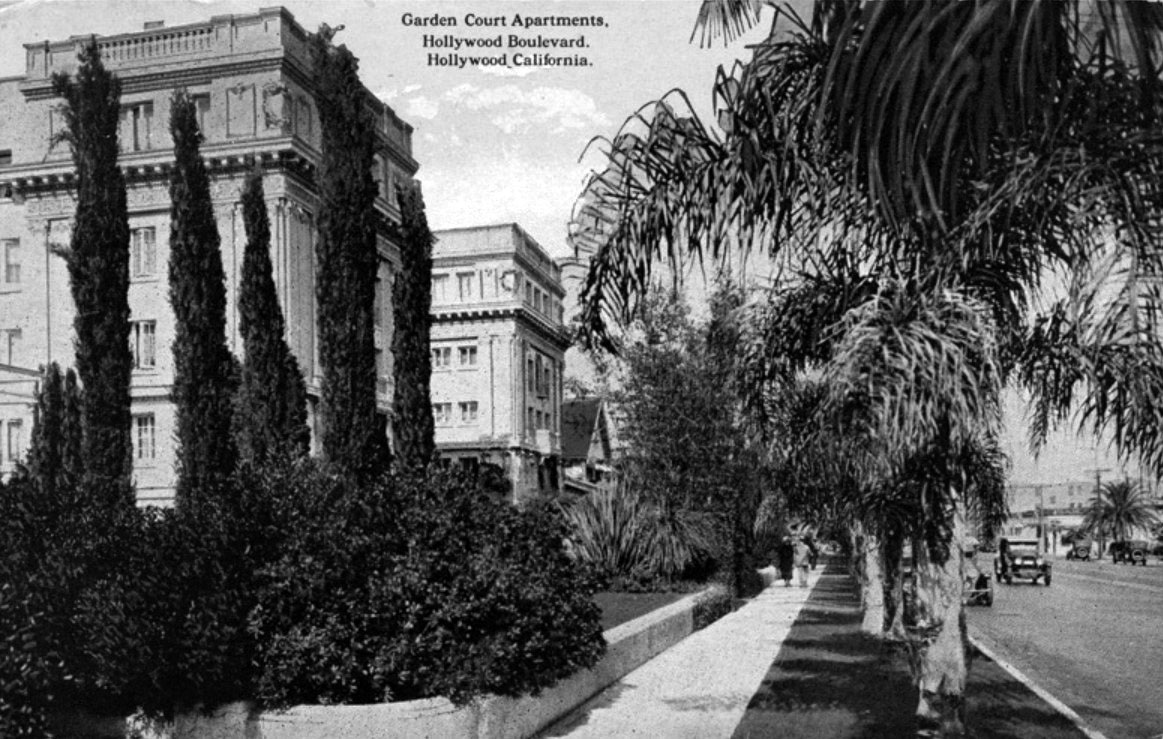 |
|
| (1925)* – Postcard view looking east on Hollywood Boulevard showing the Garden Court Apartments located at 7021 Hollywood Boulevard. |
Historical Notes Designed by architect Frank S. Meline in the Beaux Arts style and built in 1917, the classical structure consisted of 190 two and three room suites composed of hard wood and tile. The apartment building was intended to accommodate prominent members of the movie industry. Among its residents were Louis B. Mayer, Mae Murray, and John Gilbert.* |
 |
|
| (1924)* - Aerial view of the Garden Court Apartments in Hollywood. Built in 1919 at 7021 Hollywood Blvd. |
Historical Notes The four-story, 190-room Garden Court was designed in the Beaux Arts style, and its figural corbels on the exterior, supporting the second-story molding, were an integral part of the style. The Garden Court also featured tennis courts on the Sycamore Avenue side of the property. |
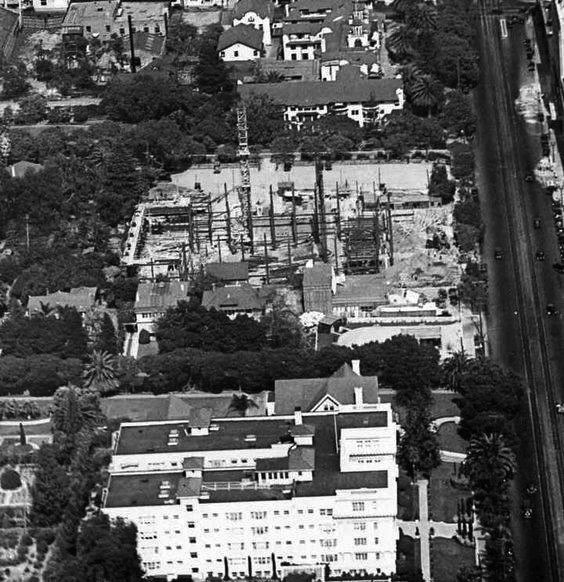 |
|
| (1926)** – Aerial view looking east showing the Garden Court Apartments with the Grauman's Chinese Theatre seen here still under construction. The Hollywood Hotel is further east, at top of photo. |
Historical Notes The flowery prose calling Hollywood “the wonder spot of the southland” described how the pergolas, gardens, and walks suggested Southern Italy with their stately beauty, and surrounded the playing fountain and pool in the inner court, a warm, simply elegant “House of a thousand wonders – the house of the heart’s desire.” |
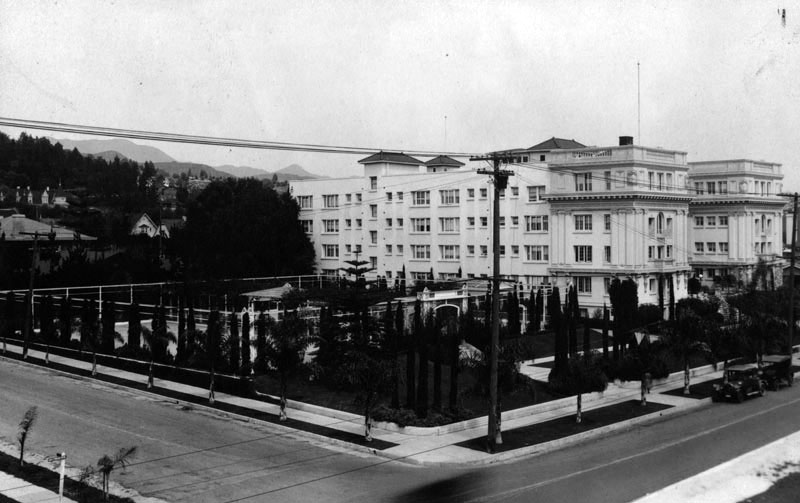 |
|
| (1920s)* - View of the northeast corner of Sycamore Avenue and Hollywood Boulevard showing the western side of the Garden Court Apartments. On the left on the hillside full of trees is the lower area of the property belonging to the Bernheimer brothers. |
Historical Notes Movie magazine Photoplay called it the “largest and most beautiful apartment house in Hollywood,” drawing movie folk and celebrities to its elegant surroundings. Sam Fox, sheet music publisher, vacationed for months at the property with his family. Director King Vidor played tennis on its courts. Actress Julanne Johnston, theatre impresario Sid Grauman, photographer Frank S. Hoover, and director Sidney Franklin lived there in the 1920s, enjoying the Pryor Moore Dance Orchestra, along with classical concerts and voice classes. * |
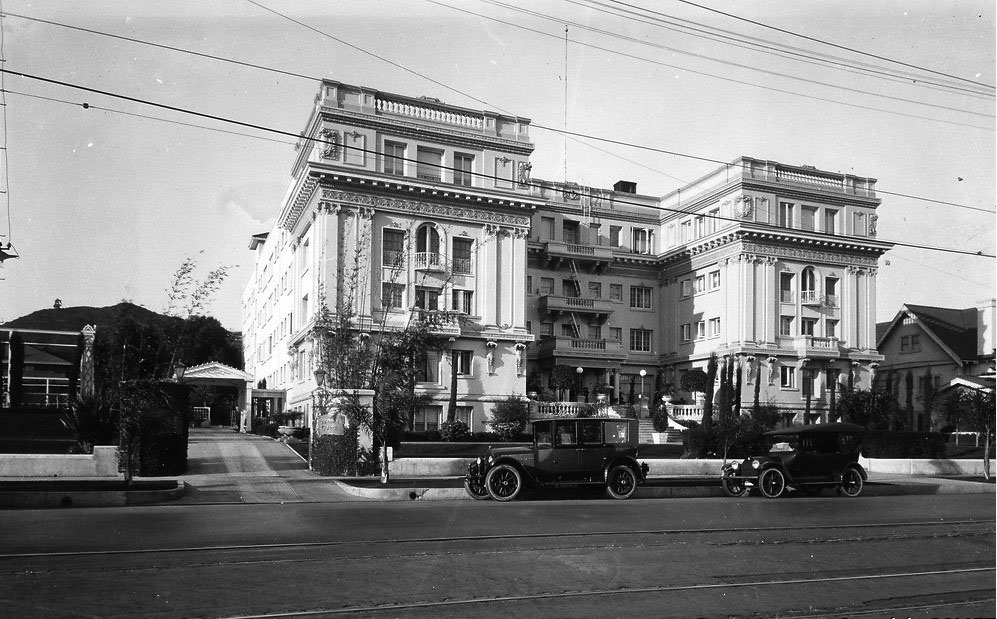 |
|
| (1920s)^.^ – Looking across Hollywood Boulevard showing two cars parked in front of the Garden Court Apartments. Note the streetcar tracks. |
Historical Notes The Garden Court Apartments offered residents such special amenities as its own garage providing car service, a commissary, two ballrooms, billiard room, beauty parlor, daily maid service, two tennis courts, pergolas, trellises, and gardens. * |
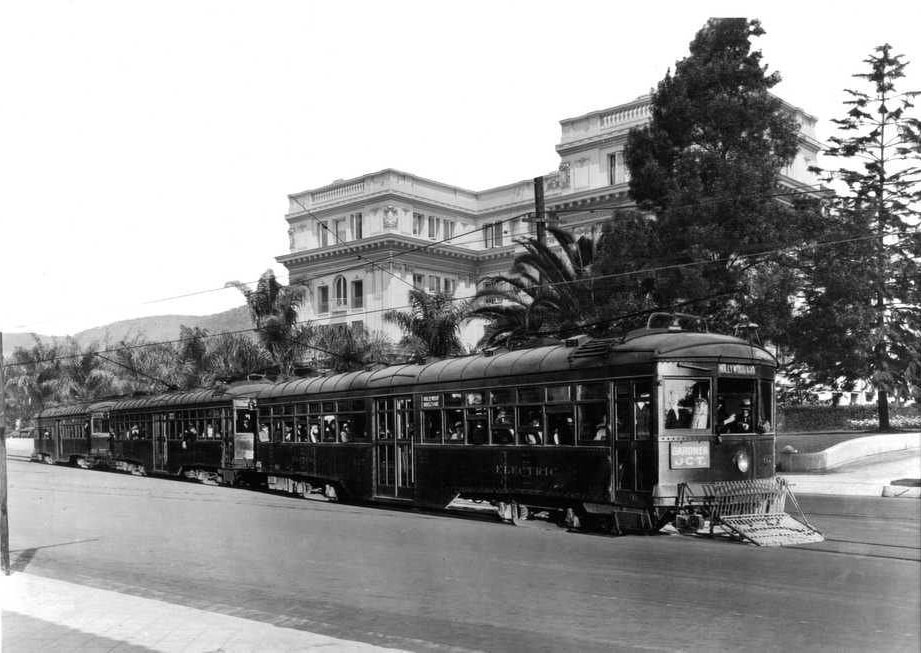 |
|
| (1920s)^ - Pacific Electric Red Cars on Hollywood Blvd. with the Garden Court Apartments behind it. |
Historical Notes From 1918 to 1928, you'd typically see a Pacific Electric car transporting hundreds of passengers down Hollywood Boulevard. |
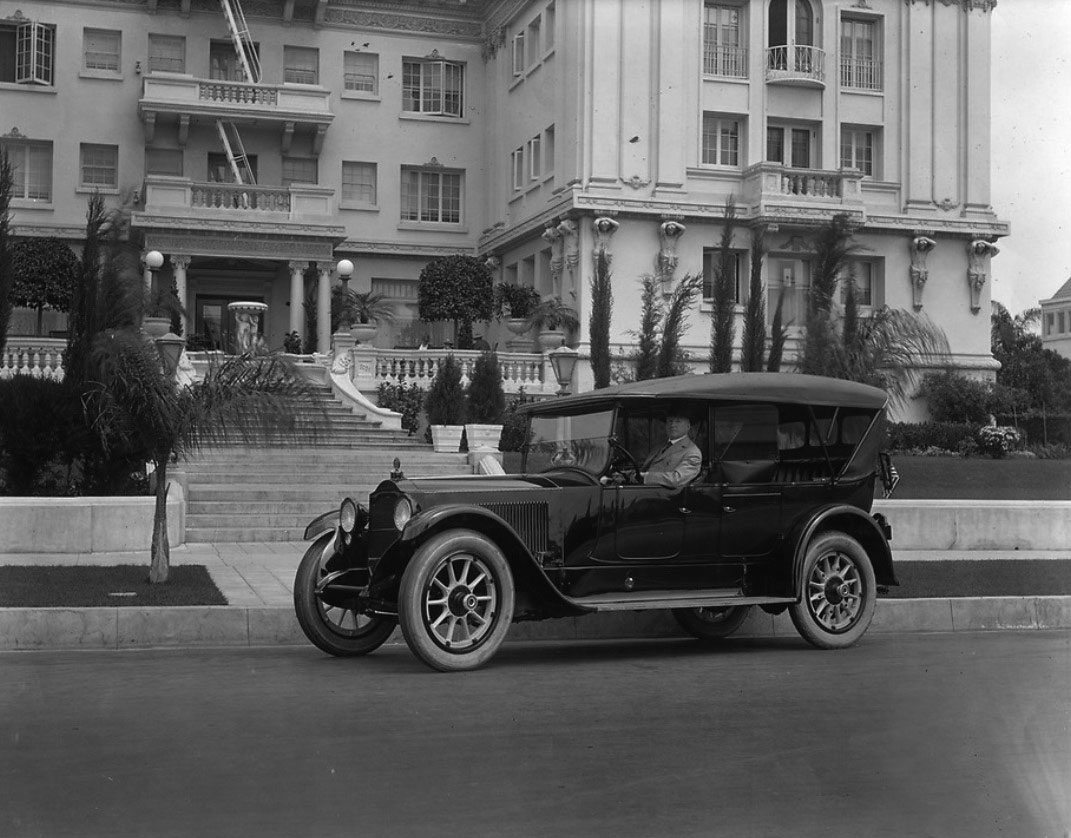 |
|
| (1920s)^.^ – Man sitting in his late model convertible posing for the camera in front of the Garden Court Apartments. Note the figural corbels supporting the second-story molding. |
Historical Notes Rich mahogany and ivory trim decorated each apartment, which included hard wood floors, plate glass windows, and period furniture, along with such special amenities as steam heat, telephone service, daily maid service, vacuum connections, sanitary garbage chutes, electric refrigerators, and circulating ice water. Apartment living rooms were furnished with overstuffed furniture, chaise longues, and Colonial rockers, while Old English dining rooms filled with William and Mary furniture were outfitted in dark blues and mulberry reds. Built-ins and beveled mirrors decorated dressing rooms outside tiled bathrooms containing alcove tubs and showers. Singles were furnished with Jacobean furniture in English oak, along with moroccan leather and tapestries. * |
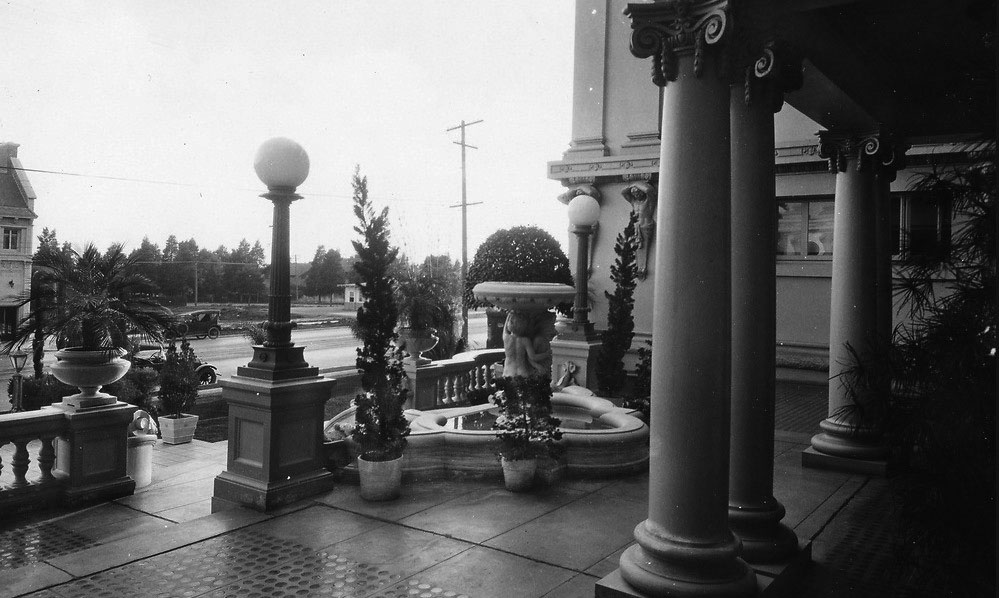 |
|
| (1920s)* – View looking SW towards Hollywood Boulevard as seen from near the front entrance to the Garden Court Apartments. |
Historical Notes Businessmen C. E. Toberman and S. A. Hartwell leased the building for 99 years on Feb. 19, 1926, per the Los Angeles Times, retaining all staff. The new managers made few changes, but opened meeting rooms to more diverse uses, including rentals by groups offering Bhagavad Gita and yoga classes. Entertainers performed in its banquet room, with vaudeville performer Virginia Sale headlining her own sketch show in May 1933, which garnered fine reviews in Variety. By 1930, however, Toberman was forced to turn over the structure due to financial difficulties. * |
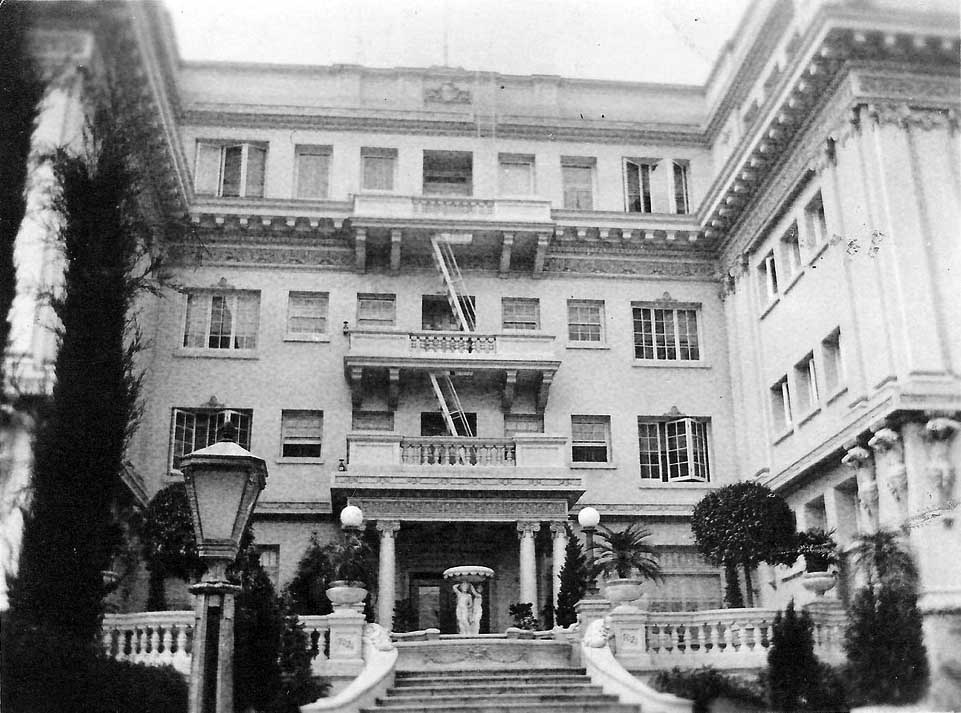 |
|
| (n.d.)*# - View of the front entrance to the Garden Court Apartments. A beautiful staircase leads to a fountain containing two figures holding up a bowl. |
Historical Notes The building was noted in the National Register of Historic Places in 1981, however, that did not prevent it from being razed in 1984.*^ |
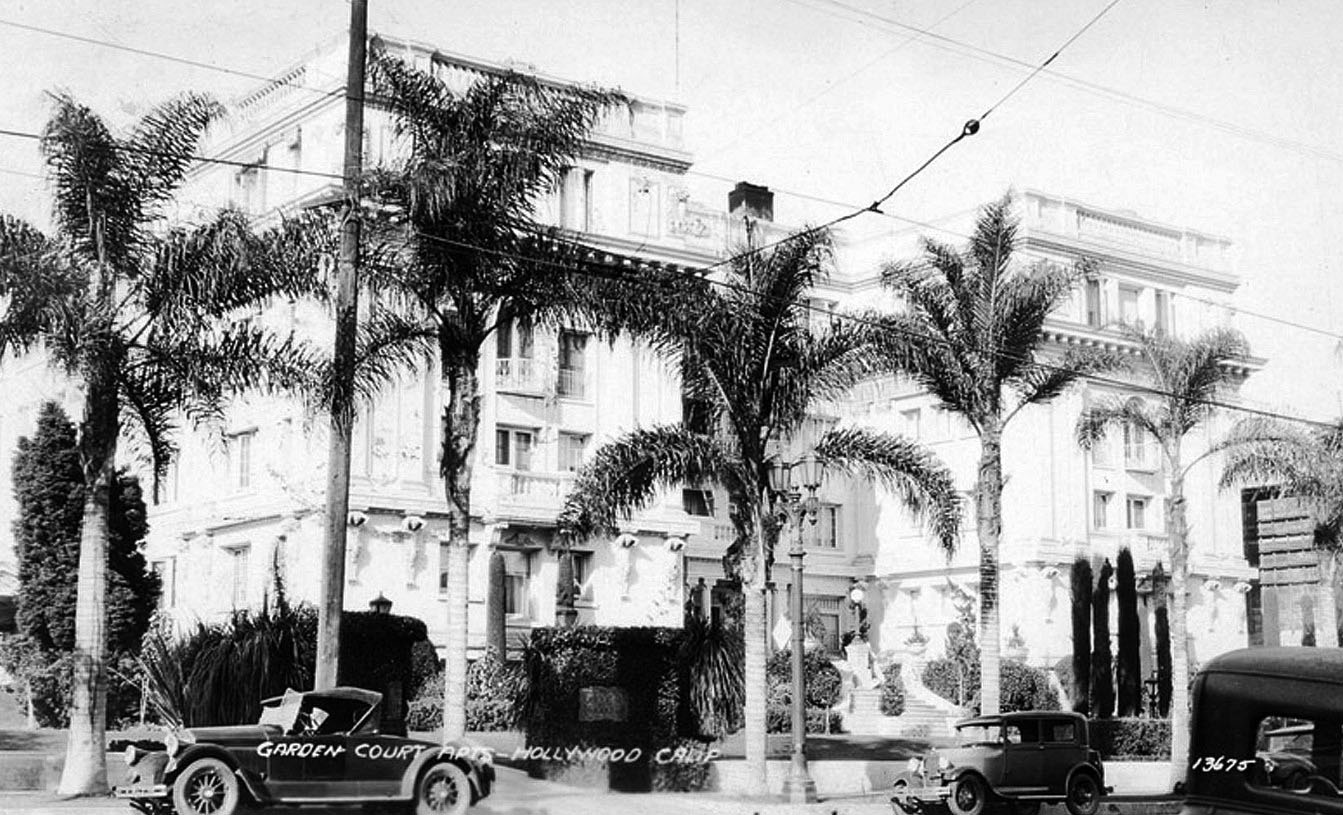 |
|
| (ca. 1931)^ - Postcard view of the Garden Court Apartments. The building was built in 1919, and was the home to many showbiz personalities. |
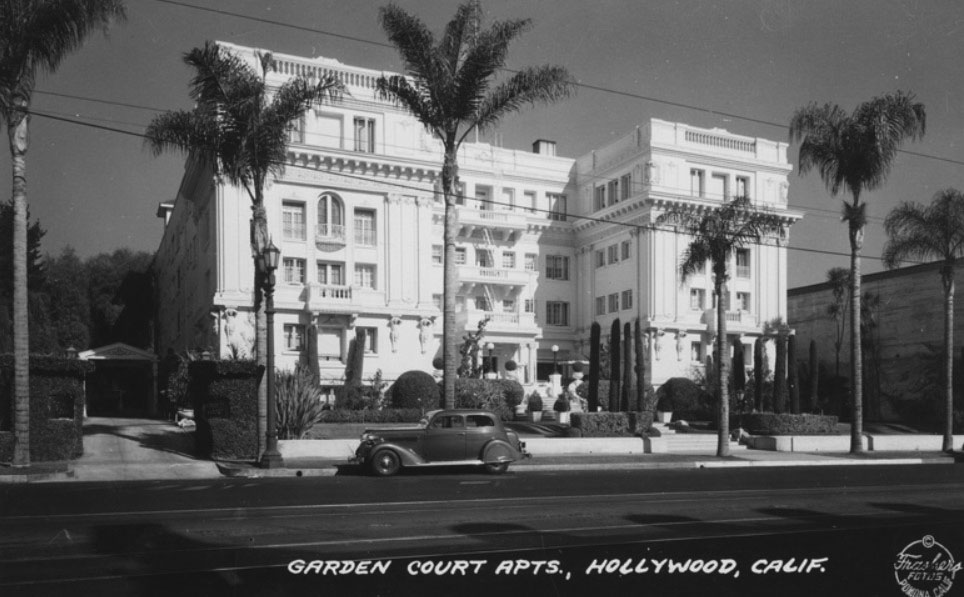 |
|
| (1940s)^ – Postcard view showing the Garden Court Apartments, Hollywood. |
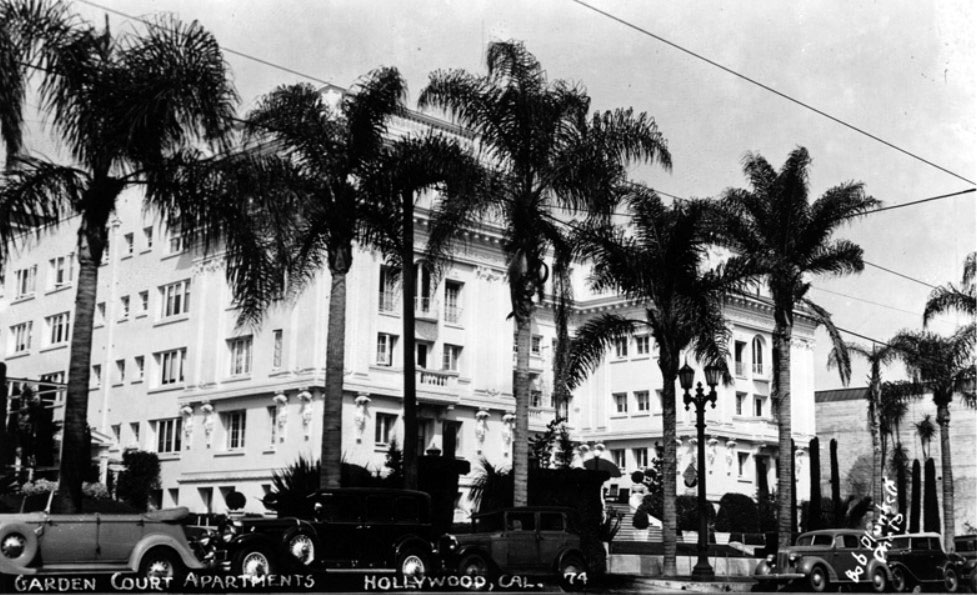 |
|
| (ca. 1947)^ – Postcard view showing the Garden Court Apartments, Hollywood. Note how the palm trees have developed. |
Historical Notes Though celebrities such as Mack Sennett, Jed Prouty, and others lived there in the 1930s and 1940s, the building began a slow decline, renting space to an eclectic series of groups to pay the bills. The Church of Ataraxia held meetings there under the direction of Rev. Pearl I. Barnes, who offered flower readings and medium services. |
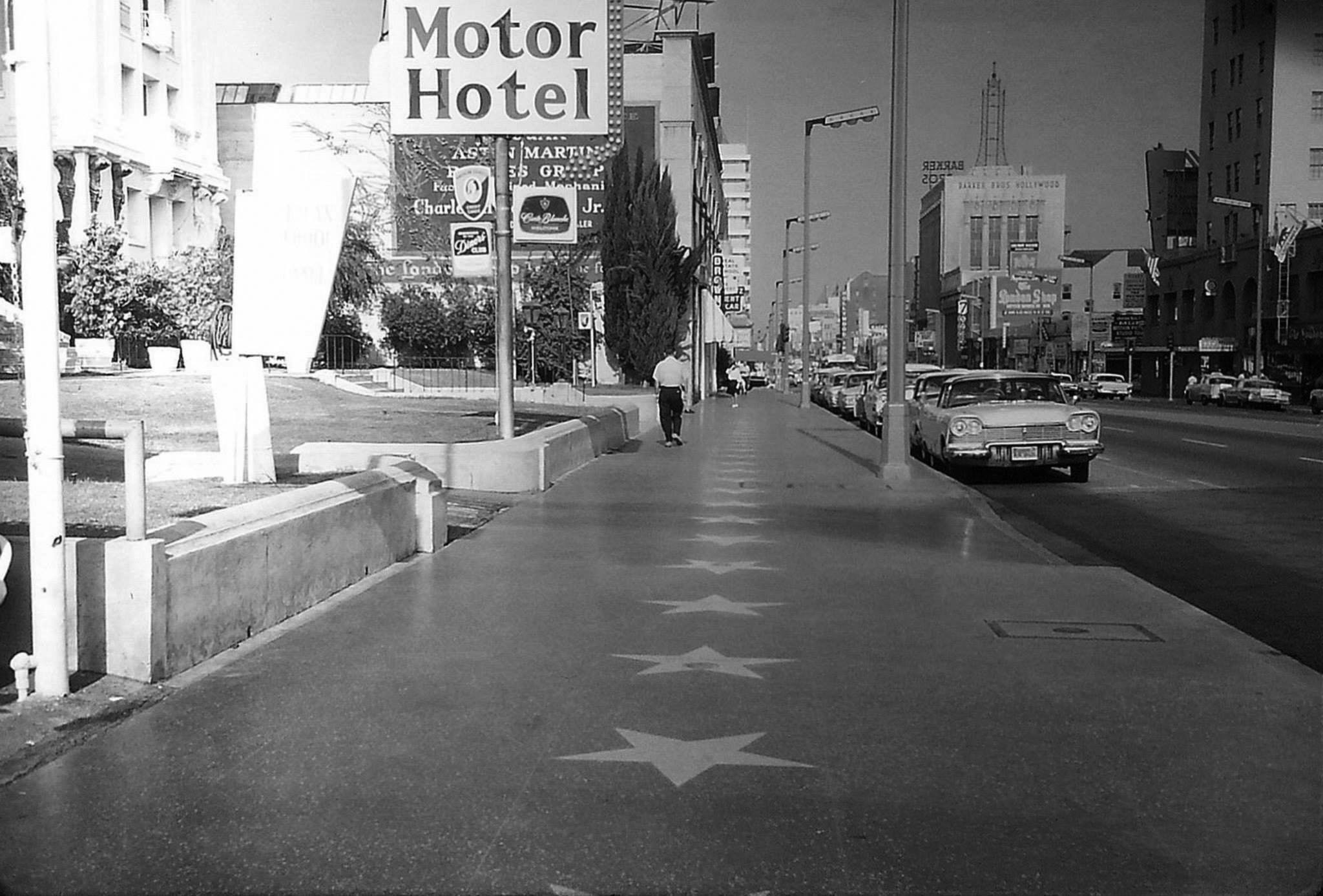 |
|
| (1960s)^ – View looking east on Hollywood Boulevard in front of the Garden Court Apartments/Motor Hotel. |
Historical Notes The Garden Court Apartments’ fortunes declined in the 1960s and 1970s along with those of Hollywood Boulevard in general. After being vacated in 1980, it was inhabited by homeless squatters and nicknamed "Hotel Hell". |
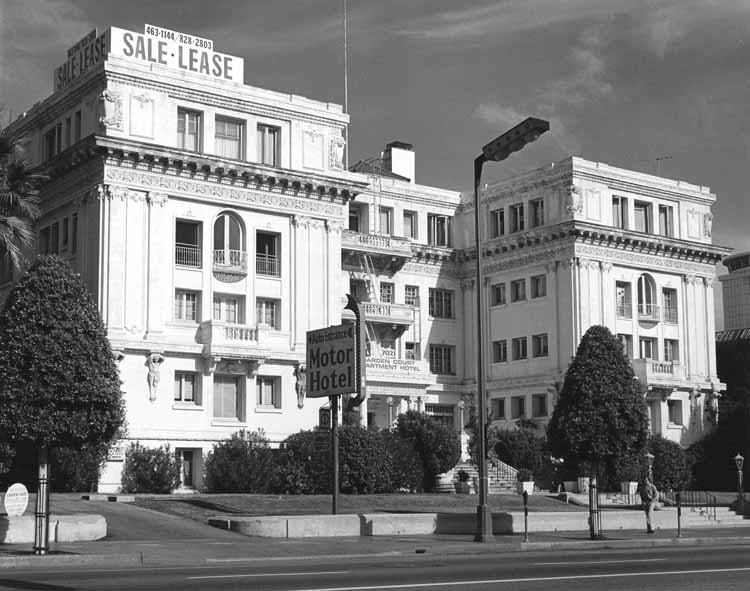 |
|
| (1976)^ - View of the Garden Court Apartments (Hotel) on Hollywood Blvd. Sign in front of building reads Motor Hotel. Note the decorative three-lamp streetlight in front of the building. |
Historical Notes The hotel was given landmark status in April of 1981 in an attempt to save it from demolition. The owner, however, vowed to tear down the hotel in 1982, so he did everything he could to ruin the building even further than it already was -- and that is saying something. The city council eventually revoked its landmark status and in 1984, it was torn down. |
* * * * * |
|
Other Sections of Interest |
|
Water and Power in Early LA |
|
Newest Additions |
New Search Index |

A new SEARCH INDEX has been added to help navigate through the thousands of topics and images found in our collection. Try it out for a test run.
Click HERE for Search Index |
* * * * * |
< Back
Menu
- Home
- Mission
- Museum
- Major Efforts
- Recent Newsletters
- Historical Op Ed Pieces
- Board Officers and Directors
- Mulholland/McCarthy Service Awards
- Positions on Owens Valley and the City of Los Angeles Issues
- Legislative Positions on
Water Issues
- Legislative Positions on
Energy Issues
- Membership
- Contact Us
- Search Index
© Copyright Water and Power Associates
Layout by Rocket Website Templates